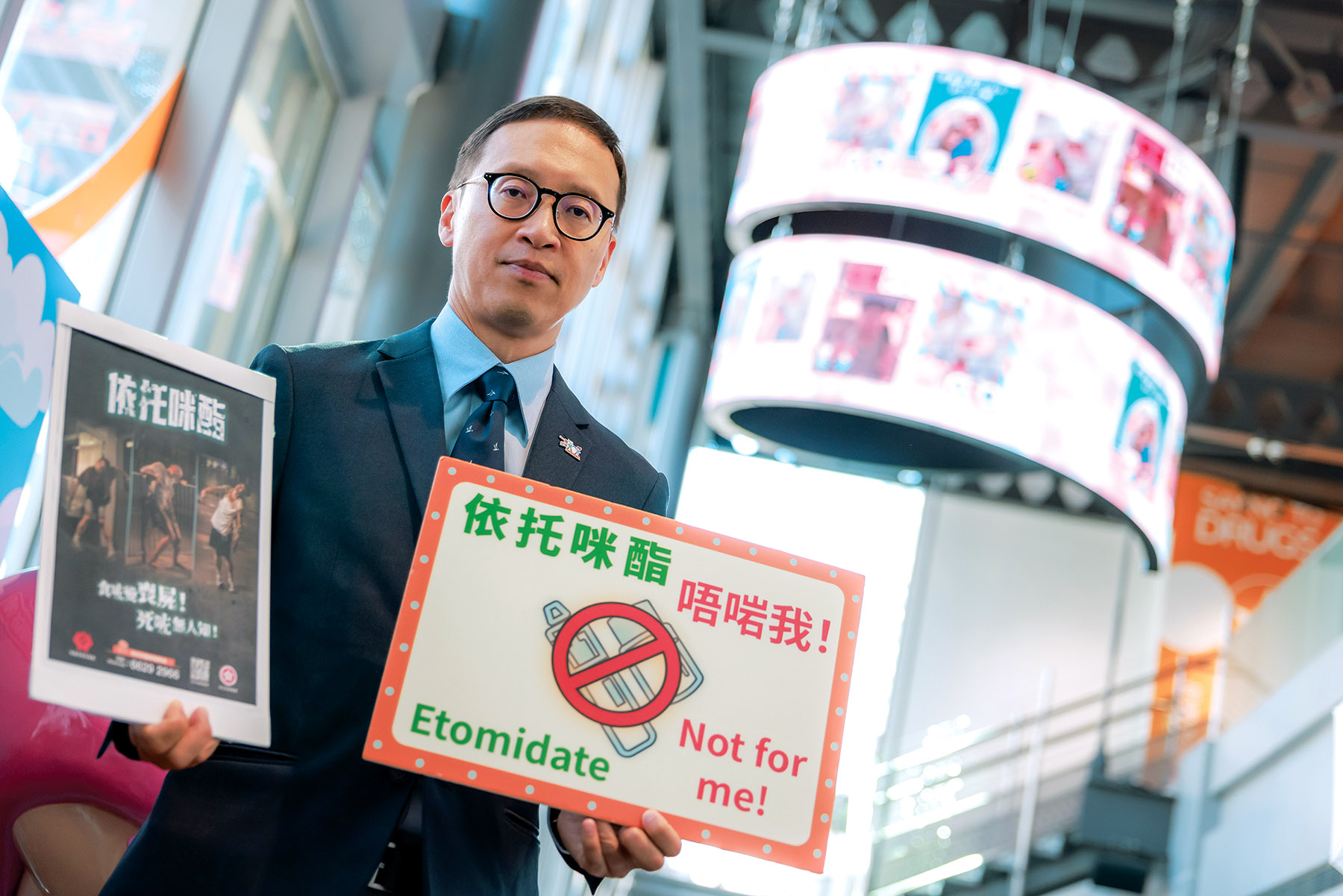
A high-level anti-narcotics conference is scheduled for Sept 5 in Hong Kong to strengthen cross-border cooperation on law enforcement, intelligence sharing, and youth engagement with neighboring cities, Hong Kong Commissioner for Narcotics Kesson Lee announced.
The Guangdong-Hong Kong-Macao Greater Bay Area Anti-Drug Summit will bring together representatives from 20 government agencies and 19 NGOs across the region. Key speakers include Wei Xiaojun, executive secretary-general of the China National Narcotics Control Commission; Hong Kong Chief Secretary for Administration Eric Chan Kwok-ki; and Donald Li Kwok-tung, chairman of the Action Committee Against Narcotics.
Coorganized by the Action Committee Against Narcotics and the Narcotics Division of the Security Bureau, the event aims to enhance cross-border collaboration in combating drug trafficking and reducing substance abuse among young people.
READ MORE: HK sees 8% rise in deception, 390 arrests over space oil
Lee said that the event comes at a critical time, as evolving drug trends and increased regional mobility pose new challenges.
He highlighted the role of new psychoactive substances, which can be manufactured from clinical drugs, in causing addiction. In response, Hong Kong authorities recently renamed etomidate, a type of anesthetic, from “space oil” to its chemical name to emphasize its dangers.
In the first half of 2025, 338 people were reported for etomidate use, already exceeding the total for the entire previous year. However, Lee attributed this increase to growing awareness, leading more users to seek rehabilitation.
In terms of legal enforcement, 561 people were arrested in 460 cases during the period, representing a ninefold and thirteenfold increase year-on-year respectively.
Youth initiative
Alarmingly, more than half of the reported users were under 18. “The youngest user on record this year is only 11,” Lee said, adding that the drug remains particularly appealing to younger demographics. He cited drug dealers’ targeted strategies aimed at students and youth, primarily by leveraging peer relationships as the reason.
For example, dealers often use young drug users to sell within their own social circles, initially offering free samples or cheap introductory offers to lure new users.
Once hooked, buyers are persuaded to purchase larger quantities through “bulk-buy discounts” where the price per unit decreases with volume, and are also encouraged to redistribute the drugs to their own friends and classmates.
In response, the upcoming meeting will feature a panel titled “Youth Collaboration for a Drug-free Greater Bay Area”, in which young people from across the 11-city cluster will share insights on drug prevention.
He said the event aims to “enhance cooperation within the Greater Bay Area, exchange best practices, and boost the morale of youth in the region in combating drugs”.
This year also marks the 60th anniversary of the Action Committee Against Narcotics, a key advisory body in Hong Kong’s antidrug efforts. A series of educational activities, including exhibitions, inter-school competitions, and television programs, were launched to raise public awareness, especially among youth.
Lee highlighted the importance of cross-border operations, citing the 2022 initiative code-named Yunzhan-Duanliu (Cloud Battle — Severing the Flow), which resulted in 123 arrests and the seizure of 6,500 kilograms of drugs over the past three years.
The operation was a joint effort among national and regional authorities. In recent years, Hong Kong has strengthened antidrug education collaboration with the mainland, including the establishment of a Greater Bay Area antidrug education base in 2023 at Dongguan’s Opium War Museum, the historic site where Lin Zexu (1785-1850), a Qing Dynasty (1644-1911) imperial commissioner, destroyed confiscated opium in 1839, symbolizing China’s determination to stop the pervasive opium trade that was destabilizing the country.
ALSO READ: HK officially renames ‘space oil drug’ as ‘etomidate’
To further support these initiatives, the special administrative region government has expanded the funding criteria of the Beat Drugs Fund, established in 1996, to include projects involving Greater Bay Area cities.
A signature program of the fund is the Healthy School Program, which promotes drug testing on campus. The number of participating schools has increased from 43 in the 2011-12 academic year to 268 in 2025-26, now accounting for more than half of Hong Kong’s secondary schools.
Lee acknowledged external challenges, such as global trends toward drug decriminalization, which may distort youth perceptions of risk.
“During the summit, we will discuss new-era promotional strategies with different regions, focusing on how to confront the various challenges posed by social media and other platforms,” he said.
Contact the writer at lilei@chinadailyhk.com


